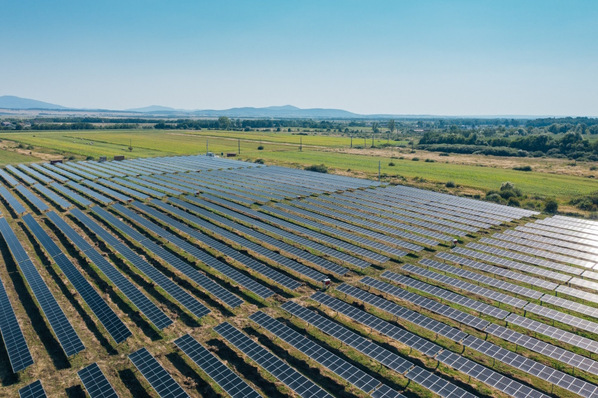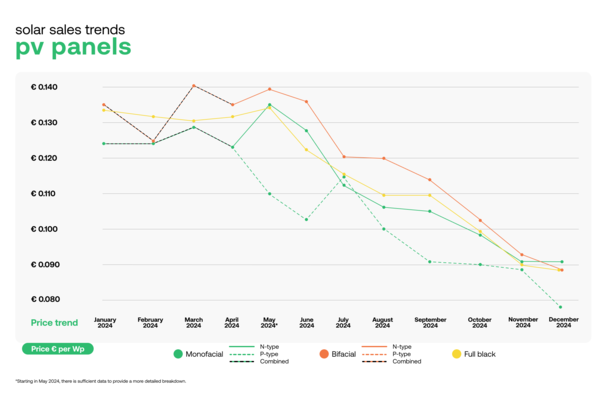As we move further into 2023, the photovoltaics market in Europe and Poland has seen a range of fluctuations in prices. The beginning of the year saw prices plummeting due to several factors, including lower freight costs from China and a drop in polysilicon costs. Within the past months, the downward trend continues, but it has not been falling so sharply. With demand anticipated to reach new heights in Q3 and Q4, investors and EPCs may find themselves struggling to acquire high-quality modules in time for installations. Despite this uncertainty, it is expected that prices will remain relatively stable until the end of the year.
Availability of PV panels in Poland
After looking at the fluctuation of prices and the state of the global photovoltaic market, it is natural to question the availability of photovoltaic panels “closer to home”, meaning the European and Polish markets. This is particularly pertinent given the anticipated record-breaking demand for modules in Q3 and Q4 of 2023. Currently, the availability of modules in Poland is quite positive.
Did you miss that? Solar panel prices in free fall
This is due to a significant decrease in residential and commercial installations following the introduction of the electricity price freeze in Q4 2022. At the same time, there may be shortages in certain categories, including n-type modules and high-quality bifacial modules. The capacity for manufacturing n-type modules is only just starting to increase, while procurement delays may impact the availability of bifacial modules. Despite these potential challenges, we remain optimistic that distributors will be able to meet the demand for photovoltaic panels in Poland this year.
Trends and preferences in PV
As we take an up-close look, it can be noted that as the photovoltaic market in Poland evolves, there is a noticeable shift towards adopting newer trends in residential and ground-mounted installations. Full black modules are gaining popularity in residential installations despite their high cost, thanks to their sleek and visually appealing design. In contrast, bifacial modules are becoming more common in ground-mounted installations, where efficiency and energy output take precedence over aesthetics. Technical specifications and module efficiency are also driving the demand for n-type modules.

Menlo Electric
It's worth considering that different modules are ordered by installers and investors in each of these sectors. Aesthetics and design are prioritized for rooftop installations, and efficiency and energy output in ground-mounted installations. These trends showcase how various factors are influencing the demand for photovoltaic panels across different segments of the Polish market.
The rising popularity of TOPCon and HJT cell modules
The recent surge of interest in TOPCon or HJT cell modules has brought to light some important questions regarding their availability and how they compare to PERC cells. The availability of TOPCon modules largely depends on the module brands carried by individual distributors, and some may struggle to meet the demand for these types of modules. Menlo Electric has been actively implementing TOPCon technology and leading in this area.
Despite manufacturers catching up in terms of n-type module availability, waiting times for new batches of TOPCon modules can range from 4 to 6 months. However, distributors may have available products for clients who need modules sooner. The increasing popularity of TOPCon modules demonstrates the industry's continued efforts to innovate and improve the performance and efficiency of photovoltaic technology.
Did you miss that? “Distribution market in Poland is undergoing gradual consolidation”
As the photovoltaic market in Poland continues to evolve, the demand for inverters in the 20-150 kW range for commercial installations has largely been met with improved availability. However, as mentioned earlier, the market still experiences shortages of inverters above 200 kW, which can result in waiting times of over a year. This has led to certain inverter brands looking to enter the high-powered inverter market to take advantage of these shortages. However, it is crucial for customers to be cautious when selecting an inverter, as choosing a low-quality one can significantly impact production. With that in mind, customers should consider consulting with reputable installers and distributors to ensure that they choose the right inverter.
Making the smart choice
The Polish market has yet to see a significant increase in the share of hybrid-type inverters, despite their potential to work with energy storage. Presently, the net-billing settlement regime in Poland does not make battery installation a profitable investment for most, resulting in a low battery attachment rate of under 5% in new installations. With the change in settlement to hourly pricing, expected by mid-2024, an increase in interest in hybrid solutions can be expected. More than ever, it is important for investors to plan ahead and consider the potential benefits of hybrid solutions. In addition to being compatible with energy storage, hybrid inverters can also offer improved system monitoring and more flexibility in design, making them a valuable investment. Despite considerable interest in hybrid solutions, most installers still prefer to use cheaper on-grid inverters. It’s necessary to carefully consider options available on the market and invest in the right technology to future-proof PV installations. Client installers are also encouraged to install hybrid inverters now in preparation for battery additions next year.
Subscribe to our new monthly special newsletter for investors:
Navigating price fluctuations in the PV market in Europe and Poland requires a keen understanding of current trends and preferences. While prices have stabilized, the availability of high-quality modules and inverters, including n-type modules, bifacial modules, and high-powered inverters, may pose challenges. However, with careful planning and collaboration with reputable distributors stakeholders can make smart choices to meet the rising demand for green energy solutions. One way is to maximize the potential of photovoltaic systems by incorporating hybrid-type inverters and energy storage for a more sustainable future. (Marta Walendzewicz/hcn)








